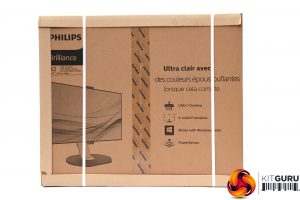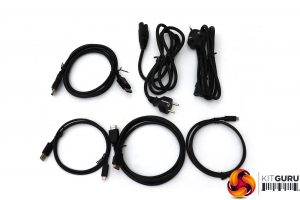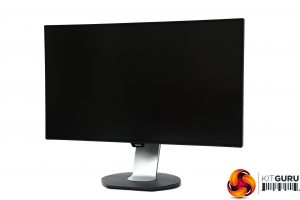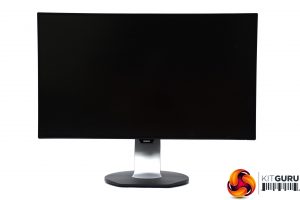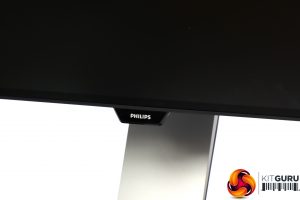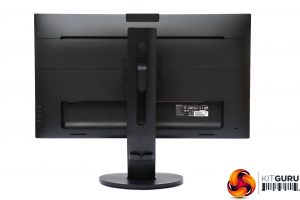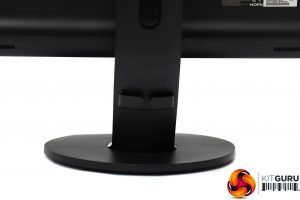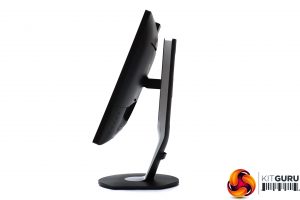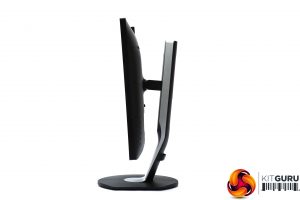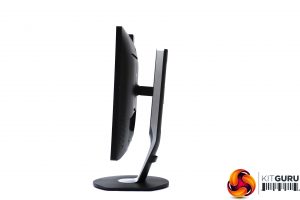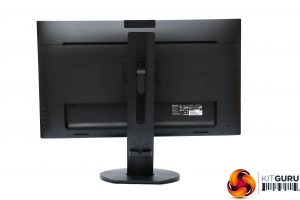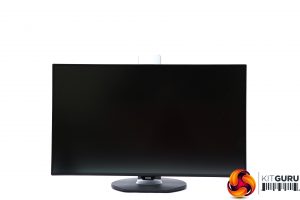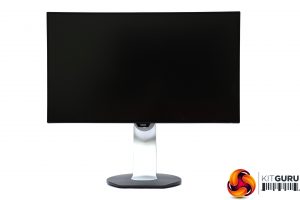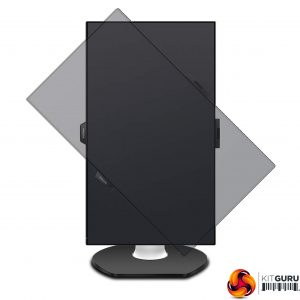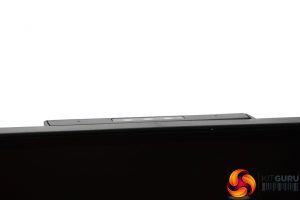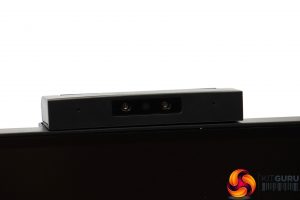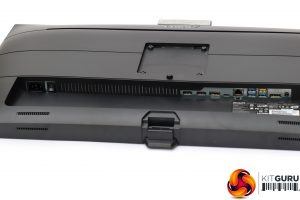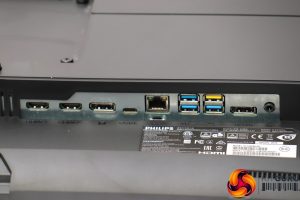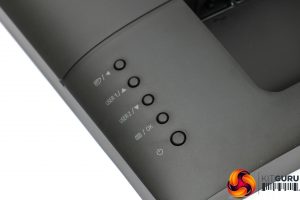The Philips Brilliance 329P9H is another business-oriented screen that comes in a somewhat nondescript brown cardboard box.
Inside, as well as UK and EU power cords, there are DisplayPort and HDMI cables plus two types of USB cable – one Type-C to Type-C, the other Type-A to Type-C – so you can connect the upstream signal whether you have USB-C or not on your host PC.
The 329P9H has a clean, business-like look. The Philips logo on the bottom actually rotates forwards and backwards, so you can have it visible or not, depending on taste. The appearance is mostly black plastic, apart from the silver front of the stand. There are cable tidy clips on the rear of the stand as well.
The adjustment potential is about the best we've seen in a monitor. You can tilt it 5 degrees forward and 25 degrees backward. You can almost turn the screen all the way round on its stand. However, it doesn't just completely rotate. Instead you get 175 degrees of swivel left and right, which is close enough.
The height adjustment is a whopping 180mm, where most screens offer 100-130mm. It's also possible to pivot the screen 90 degrees into portrait mode, a feature missing from Iiyama's ProLite SB3288UHSU-B1.
There's a 2Mpixel webcam on the top of the screen, which sensibly can be popped in and out with a push. This means you can enforce privacy if you're worried about your webcam being used illicitly for spying, but enable it when you want to make a video Skype call.
All the ports are in the same place on the rear of the panel, with just the power connection at the other end, alongside a physical switch. There are two HDMI 2.0 ports, then a DisplayPort 1.2. The USB-C connection next to that has many functions. It supports a video signal via USB-C DisplayPort Alt mode, but can also deliver 65W to an attached device. It acts as the upstream connection for the four-port USB 3.1 hub, one port of which supports fast charging (the yellow one).
The Ethernet port between the hub and USB-C port is not a management port, but a proper Gigabit LAN connection. In other words, with a compatible notebook, you can plug in just one USB-C cable to charge your laptop, and this will also allow the notebook to connect to a wired network, USB peripherals, and deliver video to the screen.
This could be very convenient indeed. However, it's worth noting that if you use a 4K video signal at 60Hz over USB-C, the hub will operate at USB 2.0 speeds. If you want USB 3.1 performance, 4K can only be displayed at 30Hz.
The DisplayPort next to the USB hub is a clone pass-through, so you can have multiple screens driven by one DisplayPort input. Finally, there's an analog audio minijack for headphones or external speakers, although the panel has 3W speakers built in.
This is a great collection of connectivity, although we would have liked at least a couple of the USB Type-A ports more conveniently located on the side of the screen for anything you want to attach temporarily, such as a USB memory key.
Although joysticks are increasingly trendy for menu control on monitors, Philips has taken the more traditional route of offering a range of buttons, in this case five.
Be sure to check out our sponsors store EKWB here
 KitGuru KitGuru.net – Tech News | Hardware News | Hardware Reviews | IOS | Mobile | Gaming | Graphics Cards
KitGuru KitGuru.net – Tech News | Hardware News | Hardware Reviews | IOS | Mobile | Gaming | Graphics Cards


